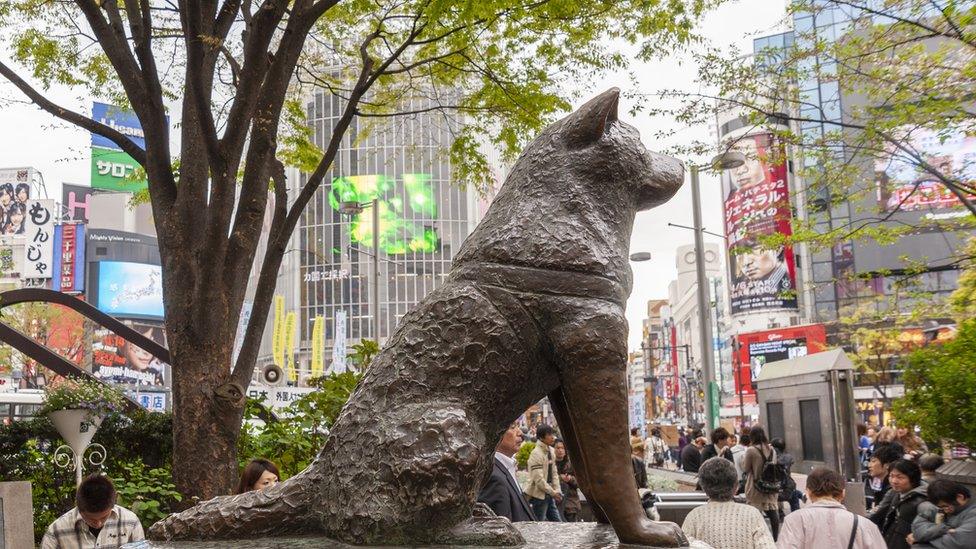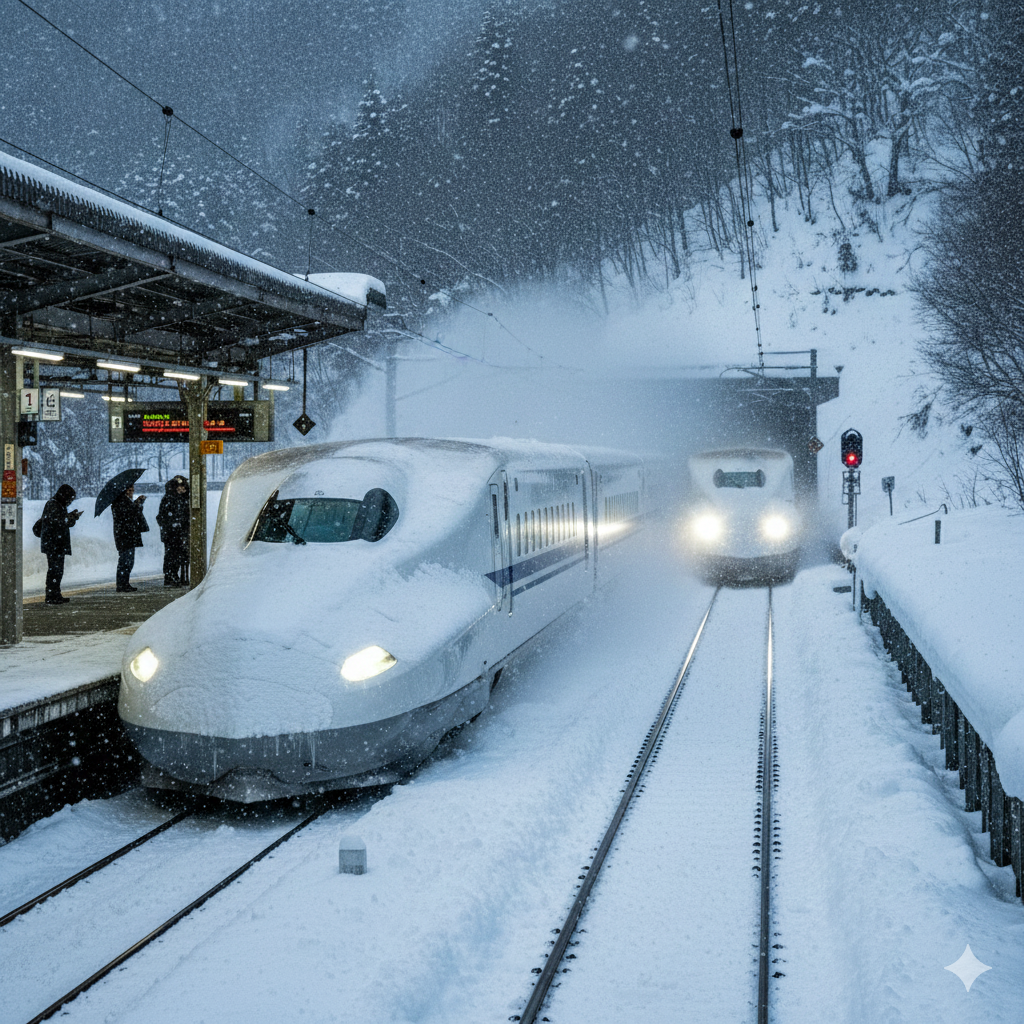Exploring Shibuya: Tokyo's Iconic Urban Hub

Shibuya is one of Tokyo's most iconic districts. As the heart of urban lifestyle in Japan, Shibuya offers a unique blend of modernity and preserved Japanese tradition. From the famous Shibuya Crossing to the Hachiko Statue, this area not only attracts tourists but also serves as a center for creativity and innovation.
What attractions can be visited while exploring Shibuya?
1. Shibuya Scramble Crossing
As an iconic landmark of Tokyo, the Shibuya Scramble Crossing (Shibuya Crossing Street) is a spot where over 1,000 people can cross the multi-angled intersection simultaneously. Despite the large number of people coming from all directions, these pedestrians are remarkably skilled at avoiding collisions with one another.
This popular intersection, often used as a filming location for movies set in Tokyo, has appeared in films like Lost in Translation and The Fast and the Furious: Tokyo Drift.
Many cafes and restaurants overlooking the intersection take advantage of their strategic location by providing seating near the windows. From here, visitors can watch the sea of pedestrians crossing or simply observe people busy taking photos.
2. Hachiko Statue
In contrast to the bustling modernity of the Shibuya Crossing, the Hachiko Statue signifies a historical story. One of Japan's unofficial monuments, the Hachiko statue in Shibuya is a tribute to the loyal Akita dog who waited for his owner at Shibuya Station every day, even after the owner had passed away. Today, the statue has become one of the most popular meeting spots in Tokyo.
A brief look at the story of Hachiko: in the early 1920s, Professor Eizaburo Ueno of the University of Tokyo adopted Hachiko in Akita Prefecture. The two became inseparable friends. Every day, Hachiko would accompany the professor to Shibuya Station when he left for work at the Imperial University of Tokyo. Then, he would return to the station every day at 3 PM to greet Ueno's return.
One day in 1925 (Note: the original text says 2025, but historical facts confirm the professor's death was in 1925), the professor passed away while at the university and never returned to say a final goodbye to his little friend. However, Hachiko faithfully continued to visit the station every day to wait for the professor's return. Finally, about 10 years later, he followed the professor in death. Hachiko's death became front-page news. He was later cremated and buried next to his beloved owner.
This story became a legend, and later a small statue was erected in front of Shibuya Station to commemorate Hachiko. To this day, Hachiko has become an enduring symbol of loyalty across Japan. The statue erected in his memory is not only a historical landmark but also a popular tourist attraction for both city residents and visitors.
Both locals and foreigners always queue to take photos with the statue, which is located just a few meters from the Shibuya Crossing.
3. Shibuya Sky Tower
Shibuya Sky is an open-air observation deck located on the rooftop of the Shibuya Scramble Square building, commonly known as Shibuya Sky Tower. Situated in the metropolitan area of Shibuya, Tokyo, the building stands at a height of 229 meters, with the observatory located on the 47th floor.
At Shibuya Sky, visitors can enjoy a 360-degree panoramic view of Tokyo. Other interesting objects visible from here include the Tokyo Imperial Palace, Shibuya Crossing Street, Tokyo Skytree, and even Mount Fuji on a clear day.
There are several other engaging activities to do at Shibuya Sky besides enjoying the view of Tokyo and its surroundings. One is taking photos at the most popular spot, Sky Edge. Another is enjoying the beauty of the sunset from the top of Shibuya Sky Tower, and an equally captivating sight is the light show called Crossing Light, which adorns the Tokyo sky with 18 shining beams of light—a mesmerizing spectacle at night.
4. Meiji Jingu Shrine
Meiji Jingu Shrine is one of the most famous Shinto shrines in Japan. Located in a 700,000 square meter forest between Shibuya and Shinjuku, the shrine is renowned for its tranquil, green environment, which contrasts with the hustle and bustle of the surrounding city, as well as its beautiful traditional architecture.
Meiji Jingu covers a vast area, with a beautiful and peaceful forest surrounding the sacred path to the main shrine. Visiting this place offers an opportunity to experience a calm and soothing atmosphere, momentarily forgetting that you are in the middle of metropolitan Tokyo.
The trees in this forest were donated from all over Japan during the shrine's construction. Meiji Jingu has many interesting places to visit, including the Inner Garden (Gyoen), filled with iris flowers, the Shrine Buildings, and the Treasure Museum, which is designated as a National Cultural Property, as well as the Meiji Jingu Museum, where one can learn about the shrine.
As one of the most popular shrines in Japan, every New Year, Meiji Jingu welcomes over three million visitors who come to perform their first prayers of the new year (hatsumode).
5. Yoyogi Park
Yoyogi Park is one of the largest parks in Tokyo, with vast stretches of grass, a pond, and forested areas that provide a refreshing atmosphere in the middle of the city. This place is an ideal location for jogging, picnicking, and various other outdoor activities.
Although the number of cherry blossom trees here is not as numerous as at other locations in Tokyo, the park remains a pleasant place to enjoy hanami during the spring. The community also holds grand parties here during the cherry blossom season. Furthermore, the park is famous for its ginkgo tree forest, which seemingly transforms into golden colors when autumn arrives.
Before becoming a city park in 1967, the area of Yoyogi Park was the location of the Olympic Village during the 1964 Tokyo Olympics. Because of this, there are many spots for jogging and cycling in the park, which are well-utilized by local residents.
6. Yebisu Garden Place
Yebisu Garden Place is one of the most pleasant inner-city areas in Tokyo. Comprising about a dozen buildings and skyscrapers, it offers a variety of restaurants and shops, the luxurious hotel The Westin Tokyo, the three-Michelin-starred restaurant Chateau Restaurant Joel Robuchon, office spaces, residences, and a photography museum.
Yebisu Garden Place was built on the site of a former brewery, where Yebisu Beer was first produced in 1890. Interestingly, it was not the town or the train station that gave the beer its name; rather, the Yebisu beer brand inspired the name of the Ebisu area and the subsequent train station that developed there.
“Ebisu” is the modern spelling of “Yebisu,” as the syllable “ye” and its corresponding kana character have almost entirely disappeared from modern Japanese and been replaced by “e.”
With many lifestyle stores and shops to explore, Yebisu Garden Place is a suitable place to enjoy an afternoon away from the busy parts of Tokyo.
7. Miyashita Park
Established in 1953, the park was later redesigned in the 1960s to become Tokyo's first rooftop garden. Today, Miyashita Park has evolved into a modern facility that offers something for everyone.
This location features a shopping complex stretching 330 meters, equipped with dozens of shops, unique alleys, and various restaurants. Meanwhile, in the rooftop park area, visitors can find a skatepark, a climbing wall, and a sand court that allows for the unique experience of playing beach volleyball in the middle of the city.
The Miyashita Park complex even includes a hotel, making it an ideal place to stay for exploring Tokyo. It is accessible with about a 3-minute walk from JR Shibuya Station and about an 8-minute walk from Tokyo Metro Meiji Jingumae (Harajuku) Station.
8. Tokyu Plaza Omotesando Harajuku
Tokyu Plaza Omotesando Harajuku is one of Tokyo's most iconic shopping destinations, especially for lovers of fashion and the latest trends. This shopping center, located at the intersection of Omotesando and Harajuku, is famous for its futuristic architectural design and elegant atmosphere.
One of its main attractions is the entrance with a kaleidoscopic mirror design, which has become a favorite photo spot for tourists from all over the world.
Inside Tokyu Plaza, visitors can find various fashion brands, ranging from international names to local Japanese designers. Besides clothing, this shopping center also features accessory stores, cosmetics, as well as trendy cafes and restaurants, perfect for relaxing after shopping.
One of the main attractions at Tokyu Plaza is the Omohara Forest rooftop terrace; a green space in the middle of the city that provides a tranquil atmosphere with comfortable seating and a beautiful city view.
9. Tower Records Shibuya
Tower Records Shibuya is one of the largest and most famous music stores in the world. With its iconic slogan, "No Music, No Life," Tower Records Shibuya is not just a music store but also a cultural hub for music fans in Japan.
Seemingly a must-visit for music lovers of various genres, the store has eight floors, each offering an incredibly complete collection of CDs, vinyl, merchandise, and music books. Besides Japanese music, Tower Records Shibuya also has a wide selection of international music, including pop, rock, jazz, hip-hop, and more.
One of the main attractions of Tower Records Shibuya is CUTUP STUDIO, a performance space inside the store that often hosts exclusive concerts, autograph sessions, and special events with famous artists. It is not uncommon for local and international musicians to stop by to perform or interact directly with fans.



